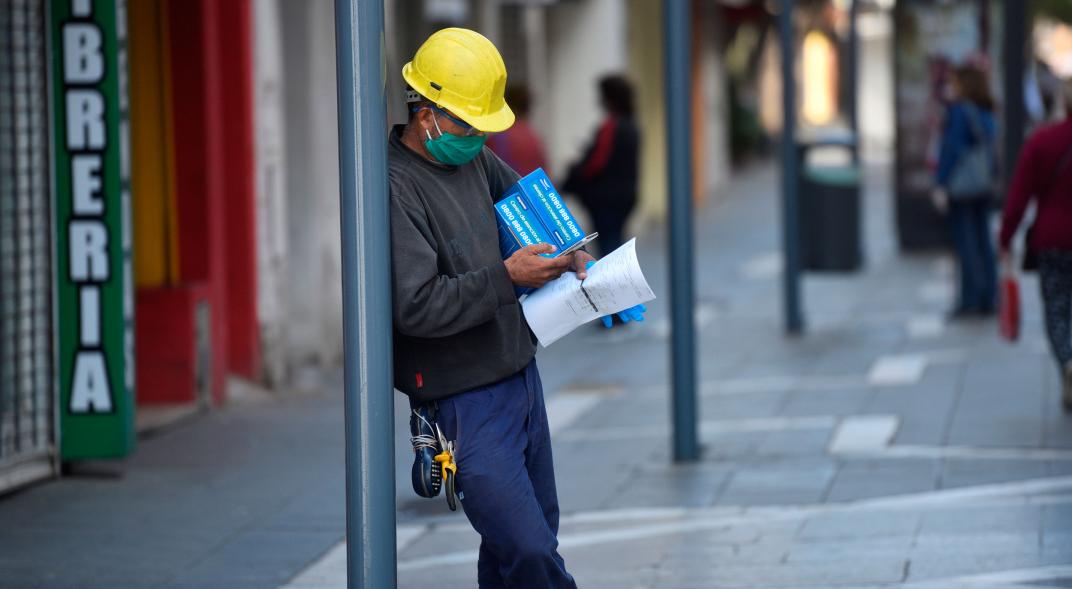Not even 24 hours had passed since the start of the quarantine that the national government promoted on March 20 when fingers began to point to the sector that would have the most complications: that of the informal and that of the independent workers.
That universe has been growing in recent years in the country as the recession destroyed formal jobs in the private sector.
To such an extent that, today, they represent more than half of the workers of Greater Córdoba, according to Idesa. “The current situation of confinement puts the 215,893 informal workers and the 161,048 self-employed workers from all sectors of Greater Córdoba at the main risk,” said economist Patricio Canalis, researcher at that consultancy.
In total, there are 376,941 people, equivalent to almost 55 percent of the urban agglomerate’s workforce (690,166 workers, few employers, self-employed, registered or unregistered employees and workers without remuneration).
“If we delve into the sectors of economic activity, we see that those workers who work in construction, commerce, lodging and food, teaching, art, entertainment and recreation services, among others, will suffer great losses with isolation. These mentioned sectors group 45 percent of the province’s economic activity, “added Canalis.
For her part, the economist Laura Caullo, researcher at the Ieral of Fundación Mediterránea, warns that “we must not lose sight of the latest data on poverty, always closely linked to the increase in informality.”
And the fact is that the deterioration usually goes in stages: from the registered sector to informality, then to unemployment and, finally, to the quasi-exclusion of the labor market.
Deterioration
The context in which deterioration occurs has a recent past riddled with complications. Before the quarantine began, formal private employment was still hit in Greater Córdoba.
With 21 months of consecutive year-on-year falls, in February it had a slight rise (0.7 percent) month-on-month compared to January.
But now, expectations are very far from sustaining a change in the trend. On the contrary, amidst the stoppage of activity for most of the productive sectors, it is discounted that the labor market will continue in a painful phase of decline.
The survey of labor indicators (EIL), which is carried out every month by the national Labor portfolio in companies with more than 10 workers, reflects an accelerated decline, to the point that the levels of registered private employment are at the same level as five years ago. years.
The strongest contrast is experienced in construction, which had been decisive for the peak that was marked in mid-2017, when public works evolved in a frantic way.
Now all is the opposite. In the last quarter of 2019 it had a year-on-year drop of 23.3 percent and although the data for the first quarter of 2020 is not yet available, nobody expects good news.
In fact, nationally, that industry collapsed 22.1 percent year-on-year in February and cement shipments fell 46.5 percent last month compared to March 2019.
What is expected for the coming months? “Everything will depend on the rhythm of the activity when the quarantine ends, but we expect more unemployment and a reduction in the activity rate,” Caullo explained.
A similar picture describes Idesa. “It is inevitable that the contraction in the economy will continue in the coming months. And this will leave certain sectors in worse circumstances, especially the employment generated by SMEs (due to their lower financial capacity) and activities that are not allowed to operate. ”
In the province
The latest report from the national Ministry of Labor on registered employment indicates that in January there were, in the entire province of Córdoba, 492,600 people released in this situation.
They were, at the start of 2020, 19,700 less than a year ago and 30 thousand less than in 2018.
That means that the biggest loss was generated last year. What’s more, of the five largest districts (along with Buenos Aires, Santa Fe, Buenos Aires and Mendoza), Córdoba is the one that resigned the most positions in the last year, data that, in this case, did not count the informal .
Recession: Deeper
Market projection released by the Central Bank.
-4.3%. Drop. In the latest survey, the survey of market expectations (REM) carried out by the Central Bank showed that a 4.3 percent drop in gross domestic product (GDP) is expected for this year, well above the expected -1.5 % prior to the coronavirus pandemic.
The original text of this article was published on 04/09/2020 in our printed edition.

Corresponsal de Argentina, Encargado de seleccionar las noticias más relevantes de su interés a nuestro sitio web NewsPer.com




